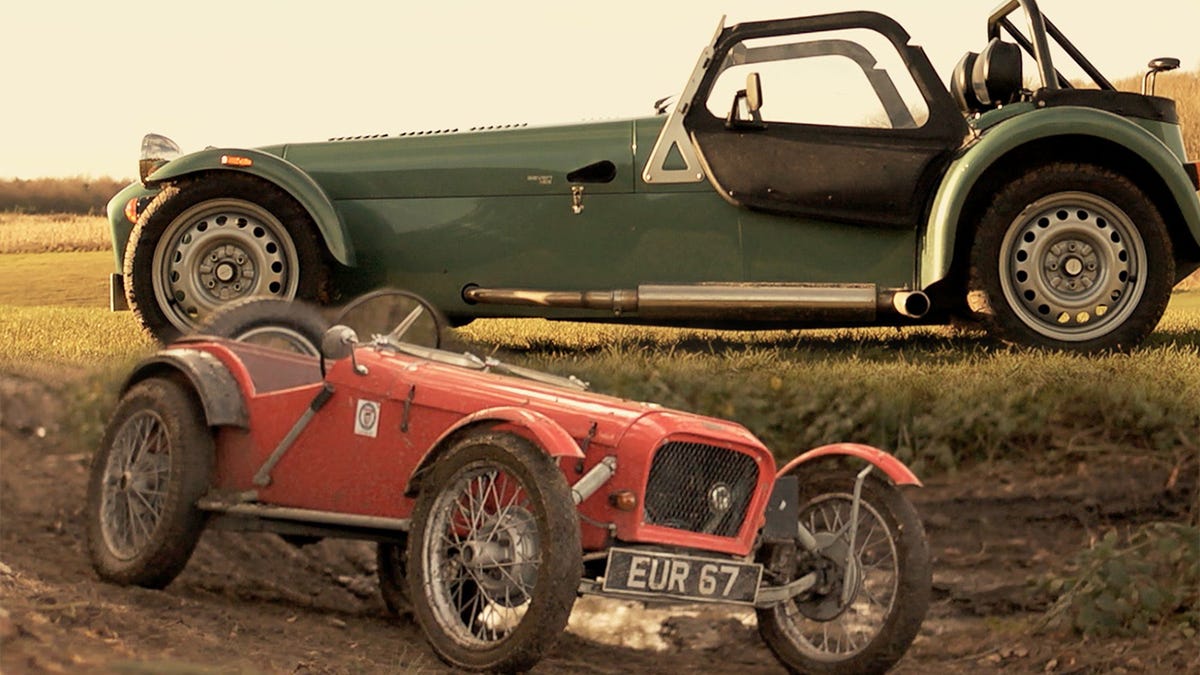Sporting Trials and the Story of Lotus Cars
This is the little-known story of Lotus cars and the grassroots motorsport that inspired Colin Chapman to build super-lightweight race cars. Many folks may know a little bit about the original Lotus 7 from the 1950s, and their modern kit car incarnations, but what happened to the Lotuses numbered 1 through 6?

To find out the full story we travelled down to rural Kent in Caterham's latest homage to the original Lotus 7: the Euro-spec Caterham 165.
In pre-war Britain, when there wasn't a surplus of smooth tarmac airfields to go circuit racing on, the predominant form of motorsport for the amateur clubman was cross-country trialling. Initially, these were long distance reliability events, but in the '40s a new breed of nimble, flyweight machines emerged to compete in sporting trials set out on tight, steep courses where the general aim was to keep going as far as you could before you crashed, lost traction or lost your nerve!
Two-time British Sporting Trails Champion, Ian Wright, was kind enough to let us loose in his fine collection of historic trails cars as well as his very own Sherpa: the cutting edge in trials car design that Ian builds himself at his off-roading experience centre near West Malling. There, we learnt the basic skills of trickling, blasting and how to manually operate traction control via the independently braked wheels. While sporting trials might have fallen off the mainstream motorsport radar since those fifties heydays, it's still thriving at the clubman level and we'd recommend to everyone that they come and experience the sport at centres like Wright's.
Colin Chapman's very first car, the Lotus 1, was built in 1948 to compete in sporting trails. Using a rotten old Austin 7 chassis, he built a stressed plywood body to produce an innovative and competitive machine. Chapman soon developed a reputation as talented car designer and went on to build the much improved Lotus 2 trials car. Chapman was so pleased with this machine's handling that he thought he'd have a crack at circuit racing with it too. On 3 June 1950, in an eight-car race at Silverstone, Chapman brought home his Lotus 2 trials car ahead of a Type 37 Bugatti to win his very first circuit race. This was the turning point for Lotus -- Chapman had now, well and truly, got the bug for circuit racing.
The rest, as they say, is history; but not before he'd one last bash at sporting trials in a modified one-off Lotus 6 (the basic sports car blueprint that evolved into the famous Lotus 7). We were very fortunate to have Lotus aficionado, and present day custodian of this important relic, Martyn Halliday, bring that unique Lotus 6 trials car along to Wright's place. This we placed in the photoshoot between the modern day Caterham and Wright's Sherpa to represent the missing link in the Lotus family tree, just at that point in history where Chapman's motorsport passions became torn, thanks to that famous underdog victory at Silverstone in 1950.
The remaining 109 Lotus 6 were all destined for the race track, and it was here that Chapman really began to prove his engineering brilliance and innovation, and the trophy cabinet just kept filling up.
By 1956, Sterling Moss had broken the lap record at Monza in a Lotus 11 race car and took class wins at Le Mans. In 1958, his mid-engined Lotus 18 won the Monaco Grand Prix. By 1963, barely a decade after the company had formed, Jim Clark's Lotus 25 brought home the F1 constructor's and driver's titles.
The Caterham 165 in this feature represents where Chapman and Lotus cars went next after they'd put their sporting trials days behind them. However, had that race at Silverstone turned out differently, we may well have seen that famous yellow Lotus emblem on modern trials machines like the Sherpa.

